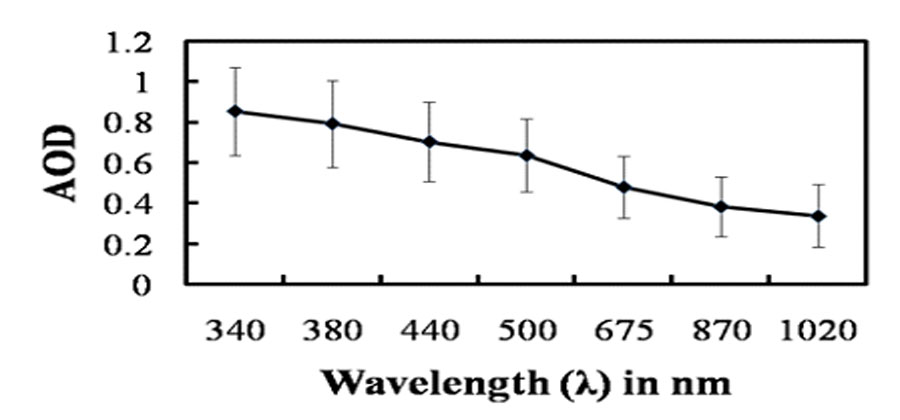


Indian Journal of Science and Technology
Year: 2020, Volume: 13, Issue: 21, Pages: 2119-2137
Original Article
Raj Kumar1,2, Gulshan Kumar3∗, Mukesh Kumar4 , Raj Paul Guleria5
1 Department of Physics, Career Point University Kota, Kota, 324005, Rajasthan, India
2 Department of Physics, Govt. College Ghumarwin, District Bilaspur, 174021, Himachal Pradesh, India
3 Department of Physics, Govt. College Sarkaghat, District Mandi, 175024, Himachal Pradesh, India. Tel.: +919418195031
4 Department of Physics, Lovely Professional University, Phagwara, 144411, Punjab, India
5 Department of Higher Education, Govt. Of Himachal Pradesh, 171001, Himachal Pradesh, India
∗Corresponding author:
Gulshan Kumar
Department of Physics, Govt. College Sarkaghat, District Mandi, 175024, Himachal Pradesh, India.
Tel.: +919418195031
Email: [email protected]
Received Date:23 April 2020, Accepted Date:14 June 2020, Published Date:23 June 2020
Objectives: To find characteristics of Aerosol optical depth (AOD) at ultraviolet (340-380 nm), visible (440-675 nm) and near-infrared (870-1020 nm) wavelength spectrum. During estimation of the radiative effect of aerosol in the atmosphere of earth radiation budget, it is important to study AOD. It is the total disappearance of sun rays due to aerosols in atmospheric column by absorption and scattering. Methodology: AOD is being measured using ground based sensor called CIMEL Sun photometer over Kanpur as it is situated in the Indo-Gangetic Basin. Findings: The seasonal variations in AOD as well as in various months of the year at 340nm, 500nm and 1020nm under all clear days have been studied. The observations showed that AOD was increasing from Pre-monsoon to Post-monsoon season at short wavelengths; whereas it was found to be decreasing at longer wavelengths regions. Novelty: Area under study is surrounded by small to large scale industries. Therefore, industrial emission is a major source of anthropogenic aerosols. The study of spectral and seasonal variations of Aerosol Optical Depth is important because the accumulation of aerosol particularly mixing state of aerosols has impact on atmospheric dynamics. Furthermore this work will also motivate the researchers to develop aerosol climatology map particularly for Indian regions.
Keywords: Aerosol optical depth (AOD); CIMEL sun photometer; solar radiations
© 2020 Kumar, Kumar, Kumar, Guleria. This is an open access article distributed under the terms of the Creative Commons Attribution License, which permits unrestricted use, distribution, and reproduction in any medium, provided the original author and source are credited.
Subscribe now for latest articles and news.